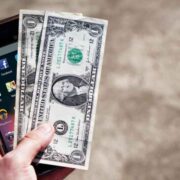Microtransactions, incremental real-time purchases typically under $10, big business across gaming, social media, news, music, and many other digital industries. But when did this monetization model really start to gain traction? Let’s look at the evolution of microtransactions in various sectors over recent decades.
- Early digital goods micropayments
Some of the earliest uses of micropayments emerged in the 1990s with digital products like music, articles, and adult content. Users could pay small per-item fees, often just pennies, to download individual files on primitive networks. These initial efforts faced challenges in profitably processing tiny transactions.
- Rise of mobile gaming micropayments
The mobile gaming revolution brought one of the first major boom times for micropayments. As smartphone games like Candy Crush, Clash of Clans, and others attracted millions of users in the late 2000s and early 2010s, virtual currency and level-up in-app purchases became big business. The games made it very easy to complete impulse buys with just a tap.
- Social media microtransactions
Social platforms also eventually adopted 소액결제 for virtual gifts and premium features. Facebook spearheaded this with its Credit currency in 2007, later evolving into Facebook Pay. Social tipping and patronage payments then gained steam on platforms like Reddit, Twitch, and Twitter via third-party services.
- Media Industry Micropayments
As traditional news and music revenue models declined, organizations like The New York Times, Financial Times, Blendle, and Spotify turned to micropayments for online articles, songs, and podcasts. Metered paywalls (like 5 articles/month free) also emerged. Micropayments seemed the natural fit for bite-sized digital content purchases.
- Rise of cryptocurrency micropayments
The birth of Bitcoin and blockchain in the 2010s opened new doors for instant, borderless microtransactions outside the traditional finance system. Cryptocurrencies expanded in tiny amounts peer-to-peer. However, price volatility and scalability remain key challenges to crypto micropayment adoption.
- Internet of things micropayments
As more physical objects gain internet connectivity and commerce capabilities, micropayment shopping functions across smart devices. Purchasing digital services on smart speakers, ordering delivery on fridges, and paying public transit fares on wearables already occur via seamless microtransactions.
- Unbundling of Services
The unbundling of services into more modular products lends itself well to micropayment models. Consumers pay per ride with Uber and e-scooters rather than owning cars. Software like Adobe CC breaks into micro-payment subscriptions instead of lump licenses. Granularity allows pay-as-you-go pricing.
- Micropayments for customer engagement
Brands have leveraged micropayments for customer loyalty programs, gamification, consumer polling/research, and social engagement. Mini-transactions drive participation while gathering data. Offers like paying 10 cents for exclusive content or surveys encourage input.
- Rising importance of digital transactions
As cash use declines and consumers conduct more daily transactions online, the infrastructure and expectations now readily support micropayments. Moving from cash to cards to mobile wallets and stored credentials has been key. While already widespread in certain sectors like gaming, micropayments are still emerging for many mainstream purchases like retail, services, physical goods, and person-to-person transfers. Tons of potential remains largely untapped across industries and product categories.













Comments